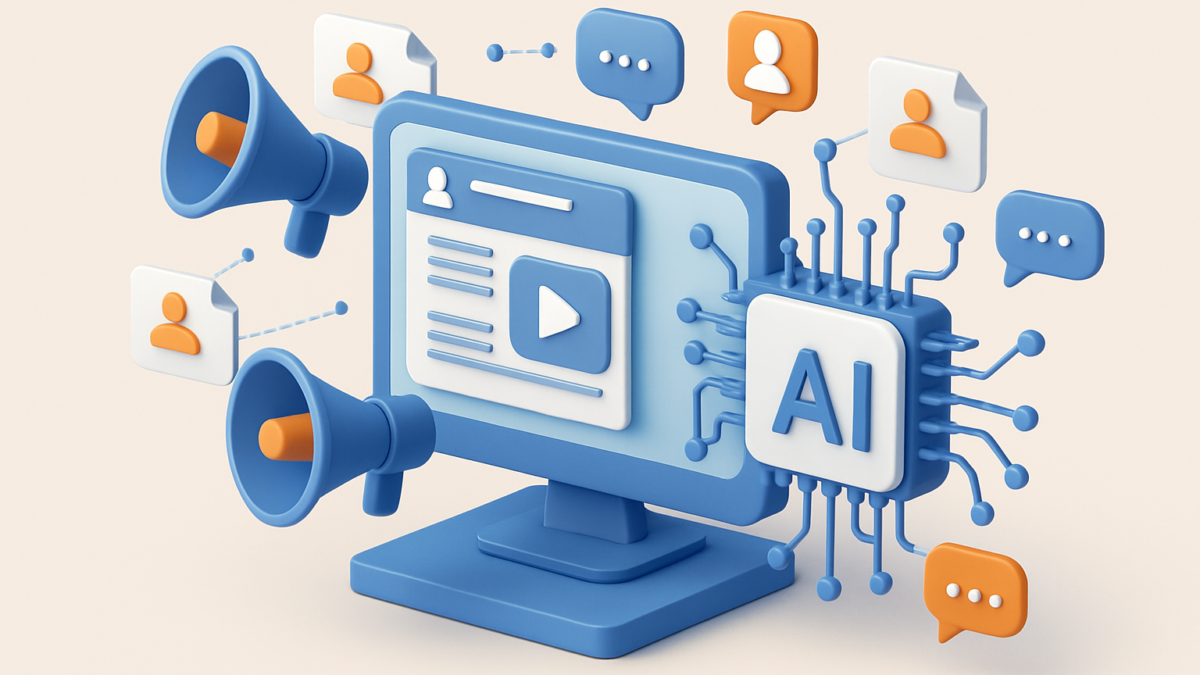The Future of MedTech: Trends & Opportunities in Healthcare Innovation
Healthcare is undergoing one of the biggest transformations in decades — and at the heart of it lies medical technology (MedTech). From connected devices to AI-driven diagnostics, the future of MedTech promises to reshape how care is delivered, how patients participate in their health, and how providers manage outcomes.
In this article, we’ll explore:
- Key growth drivers in the MedTech market
- Six major technology trends to watch
- Real-world examples of innovation
- What organizations and providers need to do to stay ahead
- Strategic opportunities and challenges shaping the MedTech landscape
Why MedTech Is Poised for Growth
The global MedTech industry is on a rapid upward trajectory. Analysts project the global market to reach over $850 billion by 2035, driven by innovations in AI, robotics, and digital health solutions. With growing chronic disease rates, aging populations, and rising demand for personalized care, MedTech is positioned as one of the most impactful sectors of the next decade.
For companies, investors, and healthcare providers, this growth represents a tremendous opportunity — not only for revenue but also for meaningful social impact.
Six Key MedTech Trends Driving the Future
1. Artificial Intelligence & Machine Learning in Diagnostics
AI is revolutionizing diagnostics and personalized medicine. Machine learning models now assist in early disease detection, image analysis, and predictive healthcare. These tools help physicians make faster, more accurate decisions, ultimately improving patient outcomes and reducing costs.
Why it matters: AI enables early detection, personalized treatment, and streamlined clinical workflows.
2. Wearables & Remote Patient Monitoring
Smart health devices and wearables are transforming the patient experience. From fitness trackers to medical-grade monitoring devices, these tools empower patients to take control of their health while allowing doctors to monitor progress in real-time.
Impact: This shift from reactive to proactive care improves chronic disease management and supports aging populations globally.
3. Robotics, Smart Surgery & Automation
Robotic-assisted surgeries and smart procedural tools are redefining surgical precision. Automation in operating rooms reduces human error, speeds up recovery times, and minimizes complications.
Example: Advanced surgical robots are now capable of performing complex operations with micro-level accuracy, leading to safer and more efficient procedures.
4. Personalized Medicine & Genomics
Genomics and biomarker discovery are unlocking the potential for treatments customized to individual patients. Devices and diagnostics are increasingly designed to deliver insights that help tailor therapies based on genetic profiles.
Outcome: Higher treatment success rates and reduced adverse effects through data-driven personalization.
5. Telehealth & Connected Care
Telehealth has evolved beyond virtual consultations. Today, MedTech companies are creating connected ecosystems of devices and platforms that enable continuous monitoring, real-time diagnostics, and remote interventions.
Result: Greater accessibility, reduced hospital congestion, and improved care for patients in remote areas.
6. Business Model Innovation & Regulatory Evolution
The MedTech industry is shifting from selling standalone devices to offering “device + software + service” solutions. Subscription-based and value-driven care models are becoming the norm. Meanwhile, regulators are evolving frameworks to keep pace with AI-driven and connected healthcare technologies.
Key takeaway: Success in MedTech now requires innovation not only in products but also in delivery and compliance models.
Real-World Examples of MedTech Innovation
- Startups are developing wearable diagnostic patches that replace traditional blood tests with real-time monitoring.
- Cardiovascular innovations, such as pulsed-field ablation (PFA), are transforming heart rhythm treatments.
- Smart prosthetics and neurotech are helping patients regain mobility and independence.
- 3D-printed implants and biocompatible materials are reshaping surgical procedures.
These breakthroughs signal a broader movement — one where technology, data, and human empathy intersect to redefine healthcare.
What Organizations Must Do to Stay Ahead
- Invest in Digital Capabilities — Integrate AI, cloud computing, and data analytics into core product lines.
- Build Patient-Centric Ecosystems — Go beyond devices; focus on seamless user experience and long-term engagement.
- Form Strategic Partnerships — Collaborate with software companies and healthcare providers to accelerate innovation.
- Adopt New Business Models — Transition from one-time sales to service-driven revenue models.
- Ensure Compliance & Cybersecurity — Protect patient data while meeting evolving regulatory standards.
- Focus on High-Growth Therapeutic Areas — Target cardiovascular, neurological, and chronic care segments for scalable impact.
Opportunities & Challenges Ahead
Opportunities
- Expanding into emerging markets with unmet healthcare needs.
- Leveraging IoT and AI to develop data-driven care models.
- Building personalized and preventive healthcare solutions.
- Creating sustainable device ecosystems that reduce costs and waste.
Challenges
- Complex and evolving global regulations.
- High R&D costs and long product development cycles.
- Data privacy and cybersecurity threats.
- Limited reimbursement models for digital therapeutics and telehealth.
The Way Forward
The future of MedTech isn’t about incremental progress — it’s about transformational change. Intelligent devices, automation, and patient data will converge to create a healthcare system that is more connected, personalized, and efficient.
As innovation accelerates, companies that combine technology with empathy — focusing on patient well-being and experience — will define the next era of medical advancement.
AI in B2B Content Syndication Services: Boost Reach & Engagement
Gaurav Uttamchandani, 6 days ago 4 min read

In today’s competitive B2B landscape, simply creating great content isn’t enough. Companies must reach the right audience at the right time. This is where AI-powered B2B content syndication services comes in. By leveraging artificial intelligence, businesses can automate distribution, optimize targeting, and maximize engagement across multiple channels.
This blog explores how AI is transforming B2B content syndication, helping companies generate high-quality leads, enhance brand visibility, and achieve measurable ROI.
1. What is B2B Content Syndication Service?
B2B content syndication is the process of distributing your content such as whitepapers, blogs, webinars, and case studies through third-party b2b content syndication platforms to reach a wider, highly targeted audience.
Key Benefits:
- Expands content reach beyond your website.
- Generates qualified leads by targeting specific industries or job roles.
- Improves brand credibility through trusted partner platforms.
Example: A software company can syndicate its latest whitepaper on cybersecurity trends across relevant tech platforms to attract decision-makers in IT departments.
2. The Role of AI in B2B Content Syndication Service and Platforms
AI enhances content syndication by analyzing audience behavior, optimizing distribution, and automating repetitive tasks.
How AI Helps:
- Targeting Precision: AI identifies the most relevant audience based on demographics, firmographics, and behavior.
- Predictive Analytics: AI predicts which content pieces are likely to perform best with specific segments.
- Automated Distribution: AI can schedule and distribute content across multiple b2b content syndication platforms without manual intervention.
- Performance Tracking: Real-time insights into engagement, clicks, and conversions.
Impact: AI ensures your content reaches the right person at the right time, increasing lead quality and campaign ROI.
3. AI-Driven Personalization in Content Delivery
Modern B2B buyers expect personalized content experiences. AI enables syndication platforms to tailor content according to:
- Industry and company size
- Job role and decision-making power
- Content consumption patterns
- Engagement history
Example: AI can automatically serve a case study about AI in finance to CFOs while showing a whitepaper on HR automation to CHROs within the same campaign.
4. Measuring Success: AI Analytics & Insights
AI-powered platforms provide actionable insights that help marketers refine strategies in real-time:
- Identify top-performing content formats (blogs, videos, webinars)
- Measure audience engagement and lead conversion rates
- Track ROI and adjust campaigns dynamically
- Segment audiences for better targeting in future campaigns
Example: By leveraging AI analytics, a SaaS company can see which topics generate the highest MQLs (Marketing Qualified Leads) and replicate success across similar industries.
5. Real-World Applications
AI in B2B content syndication is being adopted by businesses across industries:
- Tech & Software: Promote whitepapers on AI, cloud computing, and cybersecurity to IT leaders.
- Healthcare & MedTech: Syndicate research reports on new treatments or medical devices to hospital decision-makers.
- Finance & FinTech: Share insights on regulatory updates or digital banking innovations with CFOs and compliance officers.
The result is higher engagement, better lead quality, and measurable business growth.
Conclusion
AI is revolutionizing B2B content syndication service by automating distribution, improving targeting, and delivering measurable ROI. Businesses that leverage AI-powered syndication can reach the right audience, generate qualified leads, and maximize the impact of their content marketing efforts.
Call to Action (CTA)
Amplify your B2B content reach with AI-driven syndication. Leverage iTMunch’s B2B Content Syndication Services to distribute your content across 1,500+ partner platforms and reach over 1 million professionals globally. Start maximizing your content impact today!
You May Also Like: Why Your Next White Paper Should Be Interactive: Trends & Best Practices for 2025
The Future of MedTech: Trends & Opportunities in Healthcare Innovation





